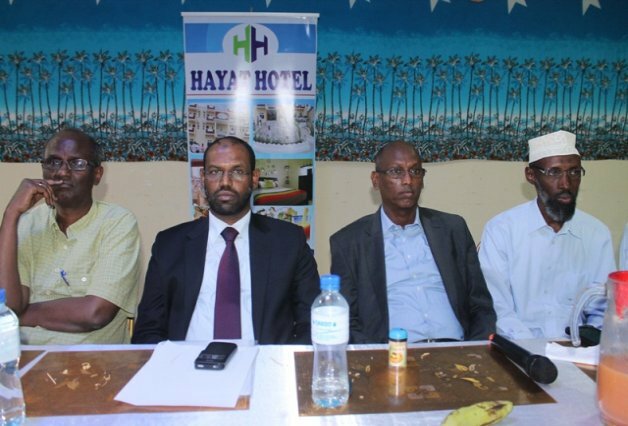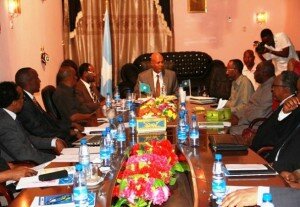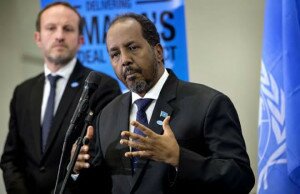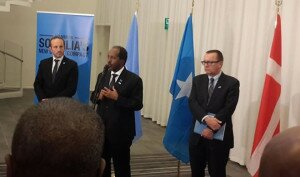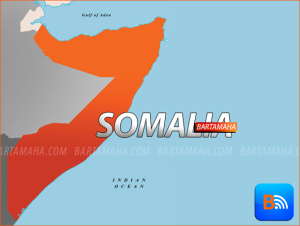Why East Africa’s Borders Are Blowing Up
Lines between countries used to have little importance in Africa’s most dynamic region. How times have changed.
In one short week in July, tension along East Africa’s borders yielded nearly 120 deaths and one nasty lawsuit — offering along the way vivid evidence of the dynamics that are shaping the region’s future.
On July 3, an anonymous farmer from the Gambella region on Ethiopia’s border with South Sudan began legal action in the British courts. The claimant accused the British government of complicity with its Ethiopian counterpart’s policy of forcibly relocating thousands of Ethiopians. On July 5, nearly 30 people were killed near the shores of the Indian Ocean during an attack on a village and police post close to Kenya’s border with Somalia. On the same day more than 90 people were killed during raids on police posts close to Uganda’s border with the Democratic Republic of Congo.
Here are three different events spanning half a continent, each reported as a distinct episode. But a closer look suggests there is a common thread connecting these and countless similar incidents and stories occurring every day in the borderlands of Northeast Africa.
Violence and instability are hardly unknown along the frontiers of this region. For more than a century, rulers in Northeast Africa — be they European colonialists, Ethiopian imperialists, or the successors of both — have seen the frontier as a buffer zone.
The mostly arid buffer has protected the agriculturally productive, more densely populated heartlands of each state from the destabilizing effects of conflict in neighboring states. Infrastructure and investment were historically concentrated in the heartlands and state interactions with the peoples of the frontier were coercive rather than cooperative. This buffer zone also marks the meeting point of Christianity and Islam. The footprint of state authority was therefore much smaller than the territories demarcated on a map.
Much has changed over the past decade. Economic growth, energy exploration, Chinese-funded infrastructure, and American- and European-funded security operations have given Northeast Africa’s states the means and ambition to conquer the frontier. The goal is clear: capture the resources that will sustain economic growth.
But this attempt to expand the state is setting governments across the region against the inhabitants of the frontier, who have spent the last century attempting to escape state control. A closer look at Kenya and Ethiopia helps explain the pattern.
The recent violence in Lamu in Kenya is the most obvious manifestation of this new trend and is indicative of the ways in which this regional process is being overlooked by an emphasis on either global terrorism or local politics. Although the attacks in Lamu by militias linked to al Shabaab in June and July are clearly tied to both the situation in Somalia and local politics, Lamu has long been the site of tensions between Kikuyu migrants from central parts of the country and communities with much longer histories of residence on the coast. But these tensions are intensifying because of new infrastructure developments around Lamu, particularly the construction of a new $5.5 billion port. Construction of the port, which is supposed to become an export hub for oil from the wider region, has inflated local land values over the past two years, sharpening existing inter-ethnic conflicts in Lamu and its neighboring counties. (In the photo above, Lamu residents protest the port construction project, chanting, “Our land, our rights!”)
Tension between communities in the borderlands used to be met most commonly with indifference by the government in Nairobi. But Kenya’s once-marginal northern region has become critical to the achievement of the double-digit growth promised by the current government. Northern Kenya hosts the country’s onshore oil reserves. It is also the site for the ambitious Lamu Port-South Sudan-Ethiopia (LAPSSET) transport corridor connecting Lamu’s new port and oil refinery by road, rail, and pipeline to the Northeast and Central African interior.
Attempting to protect investment in such projects, the Kenyan government is aggressively defending the borderlands. The most obvious part of this effort is the ongoing military mission in Somalia. But military deployments within Kenya have increased in recent years as the capacity of the Kenyan military has grown.
Military spending more than doubled from between 2000 and 2013. The reach of civilian officials has increased too. Devolution under the terms of the 2010 constitution has led to a proliferation of bureaucrats as disputes over the responsibilities of local and national government have resulted in a duplication of powers across the country.
For many local and national governments, what is taking place is the essential modernization of a backward region of the country. Few would disagree with the words of then-member of parliament for Turkana Central (and now-Senate Speaker) Ekwee Ethuro in 2011
“I don’t see any major backlash, but if there is a single-minded pursuit of the capitalist mode of production, the people might lose their traditional way of livelihood and their humanity. However, it is a necessary evil that we must live with.”
But there has been a backlash. The recent violence in Lamu is just the latest in a series of incidents across Kenya’s borderlands — including oil-rich Turkana and in Wajir and Mandera — since the largely peaceful elections of March 2013. For all the modernizing rhetoric, the spending on security, and the ambitious infrastructure projects, the state continues to rely on coercion when attempting to exert control over the peoples of the frontier.
Across Kenya’s border with Ethiopia, a similar state-building project is taking place. Over the past decade the Ethiopian government, controlled by the Ethiopian People’s Revolutionary Democratic Front (EPRDF), has made significant strides to overcome its structural economic challenges and to increase the capacity of the state. This has focused in particular on physical infrastructure — roads, rail, telecommunications, and electricity — as part of an effort to transform Ethiopia from its current status as a net importer to a net exporter. The government aims to overcome Ethiopia’s dependence on foreign aid and to guarantee the country’s stability.
The strategy is bearing fruit: The value of Ethiopia’s exports tripled between 2005 and 2012, to nearly $6 billion, as the government has overseen an average growth in export volumes of about 9.4 percent per year since 1995. Nevertheless, continued dependence on imports means that the country’s trade deficit has been widening; it topped $3 billion in 2013. The government sees the solution as lying, in large part, in the country’s peripheral areas.
Since the middle of the 20th century, Ethiopian governments have tried — largely unsuccessfully — to tap the economic potential of these parts of the country. After an initial push to improve the performance of widespread smallholder agriculture, the government has shifted its focus to promotion of larger scale commercial agriculture — including in Gambella Region, the Awash basin in the Afar Region, and the Lower Omo River basin in the Southern Nations, Nationalities, and Peoples Region (SNNPR). Agribusiness has already spread across the Shewan plateau in range of the capital Addis Ababa, and its more developed transport linkages.
Although often discussed in the terms of the global debate about “land grabs” — usually portrayed as a process whereby large commercial interests (often foreign) take over vast tracts of land for exploitation, with local populations severely disadvantaged as a result — it appears thatEthiopian-led deals are driving the expansion of commercial agriculture. The state itself is a major player, responsible for about one-third of the 1 million hectares reportedly leased for large plantations. Sugar is a key crop being grown for export, but projects also include rice and cotton.
Irrigation for these projects is one reason for the construction of large hydroelectric dams on the Lower Omo River in SNNPR. But those dams, and the even larger Grand Ethiopian Renaissance Dam on Blue Nile, will also enable Ethiopia to earn hard currency by selling power to its neighbors.
However, the Omo dams are set to have a major negative impact on the Lake Turkana region, according to an Oxford University study, but both Kenya and Ethiopia are prioritizing the benefits of electricity production over environmental and social impacts.Hundreds of thousands of people are affected in the regions where such projects are underway. The government’s plans to deliver modern services — e.g. clean water and schooling — to new villages to which populations are being relocated appear to have fallen short of promises.
Compared to the demographic density and political salience of the highlands, the range of smaller groups most negatively affected does not constitute a significant threat to the government’s overall control. However, the EPRDF appears to be creating trouble for itself, and there are emerging signs that donors are uneasy about the forced resettlements involved in the process. An indicator of this came in April and May, when protestsbroke out at university campuses in the Oromiya Region against the expansion of the footprint of Addis Ababa into Oromo areas. Dozens were reported killed.
Critics of such projects have largely focused on halting them in order to prevent what appear to be inevitable side effects. But states in Northeast Africa will not turn aside from their plans to develop and exploit the resources of their frontiers, and increasingly have the means at their disposal to follow through.
Governments are focused on the overall benefits of the modernization agenda, which should not be discounted. Governments have stressed their sovereign right to pursue development in the national interest, although with little clear definition of how the benefits of such projects will be distributed. Nevertheless, for states long perceived as heavily dependent on donors — and open to their influence — a new sense of economic independence is a welcome shift.
However, being lost in between are the populations of the frontiers, whose options are becoming increasingly constrained. A shift in the debate from prevention to mitigation would appear to be in order, from both governments and critics. The geographic frontiers may be the new focus of development, but social and economic frontiers are not so easily constrained in a “buffer zone”: the effects of these more assertive policies will be felt in the centers as well.
Source: Foreign Policy
Comments
comments
 Calendar
Calendar





















